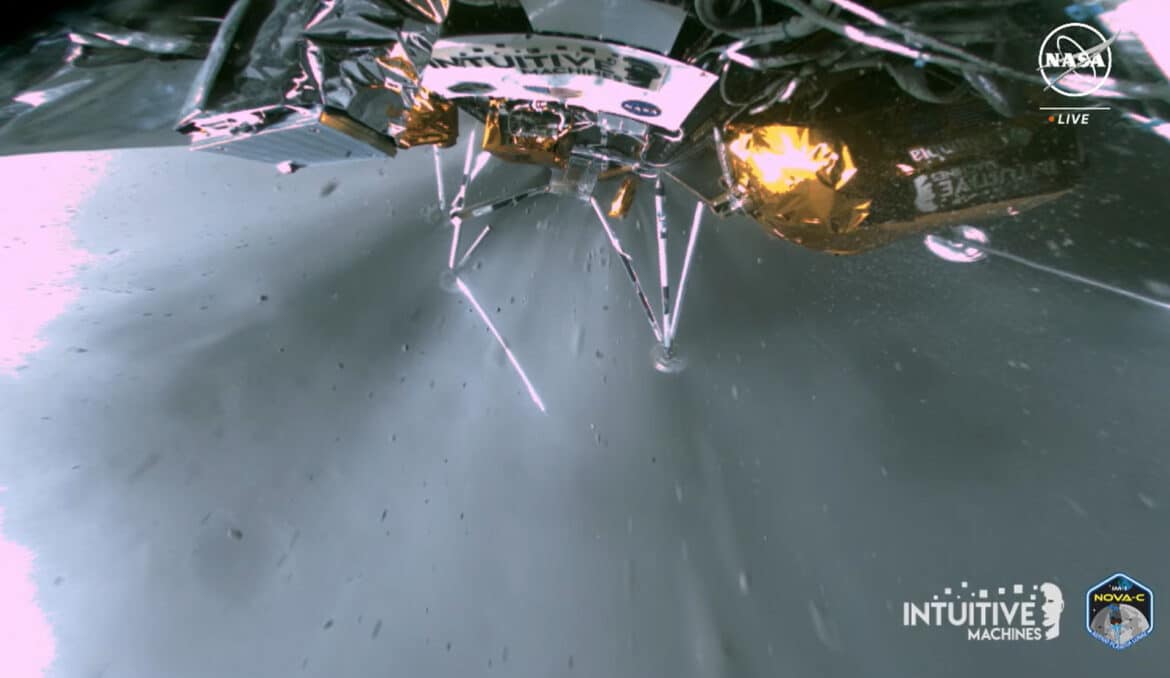

After several trials, Intuitive Machines managed to obtain an image of Odysseus on the surface of the Moon. This shot helped us understand the position it is in.
© Intuitive Machines
The Return of the United States to the Moon
Both NASA and Intuitive Machines Call it a Huge Success
On February 23, 2024, Odysseus, the NOVA-C lander created by Intuitive Machines, landed on the Moon. This is the first time that a private company has achieved this feat. This historic moon landing marked the return of the United States, more than fifty years after Apollo 17. Indeed, the spacecraft was carrying six NASA instruments, as part of the CLPS (Commercial Lunar Payload Services) program. “We had very high-level mission goals to land softly on the surface of the Moon and return scientific data to our customers,” said Steve Altemus, CEO of Intuitive Machines, at the February 28, 2024 press conference. “Both of those goals have been met, so in our opinion, it’s an unqualified success.” Earlier, Bill Nelson hailed the success of this mission. “Odysseus is a success from NASA’s point of view,” the NASA administrator said. The U.S. space agency says it has received data from five of the onboard instruments. The sixth, a laser reflector, is expected to be tested in the coming months.



















